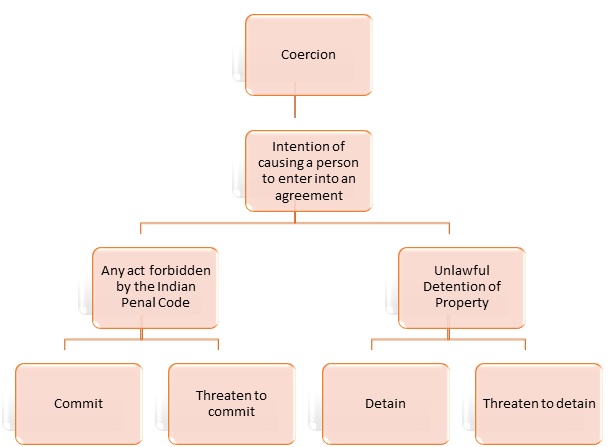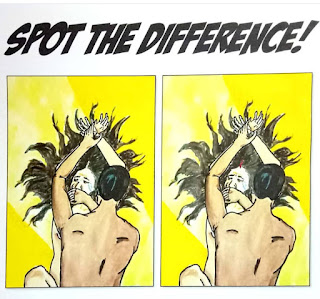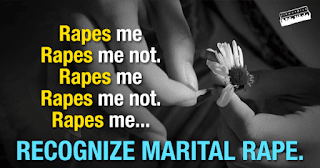Child Pornography - A Bane for Society
PC: Legal Wires
The 23rd March 2020 was a date since when India started to follow a strict lockdown to curb the spread of COVID-19. From
this day not only the cases of COVID-19 have increased but also the cases of child
abuse or child pornography. According to India
Child Protection Fund (ICPF), there has been a steep
increase in the searches like “Child porn”, “sexy child”, and “teen sex videos.”
along with an increase
in traffic on Pornhub from India by 95% between March 24 and March 26, 2020,
as compared to before the lockdown. This percentage is comparatively higher
than in other countries.
The word Pornography is derived from
the Greek ‘porni’ (prostitute) and ‘graphien’ (to write), which means
writing about prostitutes. When value judgments are attached to this old school
definition, pornography is perceived as a sexually explicit material designed
to produce sexual arousal in consumers that is bad in a certain way, such as
distorted perception of reality, sexual addiction and can lead to aggression
and abuse.
Child pornography is defined as “any visual
depiction of sexually explicit conduct involving a child, which includes
photographs, videos, digital or computer-generated images indistinguishable from
an actual child and an image created, adapted or modified but appear to depict
a child.”[i]
This material nowadays is easily
available, and any person within a click can access this material. We have known
for a while that India
is one of the biggest contributors to Child pornography and also among the
biggest consumer. Millions of paedophiles, child rapists, and child pornography
addicts have migrated to this content and making the internet an unsafe place for
teens and small children.
Statistics related to Child sexual abuse
It is often
seen that the child sexual abuse case found among girls is 1 in
9 and among boys is 1 in 53. 82% of all victims
under 18 are females who face such a horrifying situation, and females ages 16-19
are 4 times more likely than the overall population to be victims of rape,
attempted rape, or sexual abuse. 93% of time the
child victim knows the perpetrator, and most probably, they are family
members. As
many as 109 children are sexually abused every day in India. Overall, crimes
against children have increased over six times in the decade over 2008-2018, from
22,500 cases to 1,41,764 cases in 2018.
Legal status of Child Pornography in India
In India, Pornography in any form is illegal and comes under sections 292 and 293 of the Indian Penal Code, 1860, which states that publication of a book, pamphlet, paper, writing, drawing, painting, representation, figure, etc. will be deemed as obscene, and its distribution and circulation will lead to imprisonment of three years and a fine of Rs.2000. To invoke section 292 IPC, it is vital to state the ingredients-
- If the publication is expressing sexual desire,
- Appeals to the sexual interest (excessive interest in sexual matters),
- If the effect is to deprave and corrupt persons who view the publication.
To emphasize the protection of children from sexual offences, POCSO (Prevention of Children from Sexual Offences) was introduced in 2012 to protect children below 18 years of age from sexual harassment and pornography.[ii]
POCSO, in its recent amendment in 2019, has provided
twofold punishment for the offenders. According to the latest amendment, the
person who is using child or children for pornography will be imprisoned for 5
years and subsequent conviction may lead to imprisonment of seven years. In a
landmark judgment, Ms. Eera Through Dr. Manjula ... vs State
(Govt. Of NCT of Delhi),[iii] it was held by the Supreme Court that minors
are to be provided with lawful consent entitlement under the POCSO Act by
recommending the statutory age with which the minors have a connection. Simply
speaking, the POCSO Act just aims to recognise minors as a category and
provide them protection from sexual offences. In addition to this, in another
case State v. Mohan[iv]
the Supreme Court held that even an attempt to commit rape upon a minor girl
has irreversible consequences on the mental health of the girl child.
Further, if any person stores pornographic material
involving a child will be imprisoned for as long as three years or with a fine or
both.[v]
Additionally, the Information and Technologies Act, 2000 (IT Act) is brought into
view of this crime as well. This act deals with prevailing cybercrime in the
country. Section 67B[vi] of
the act targets the object of child pornography and criminalizes its
depiction. In the case of Shivaprasad Sajjan vs State
of Karnataka[vii]
the accused was a software engineer and had sent obscene emails and photographs
of his victims from a cyber café. The accused was found guilty by the Karnataka
High Court under Section 67 of the IT Act and sentenced to two years in jail
and 25,000 rupees fine. Furthermore, in another case, Dr. L. Prakash v. State of Madras[viii], the accused was an orthopaedic surgeon who had a
farmhouse and hired a few people to procure young girls with their help and
detained them at the farmhouse and force them into a sexual act, photograph, videography
them and send them to his brother. This invoked Section 67 B and was hence
convicted by the Sessions Court, and the same was upheld by the High Court. We
can thus infer from the above cases the courts across India are very strict on
charges on Section 67B of the IT Act.
According to Article 39 (f) of the Indian Constitution, it is stated that the State must direct its policy such that children are given opportunities to develop in a healthy manner and are protected against exploitation. A step in this direction was seen in 2019 when the POCSO Act was amended to clearly define child pornography which was seen as a step in the direction of combating child pornography. In addition to this, Article 19(2) of the Indian Constitution gives eight grounds for the restriction of speech and liberty, one of which is “morality and decency” which applies aptly to the present situation of child pornography.
Impact of the Lockdown on Viewership of Child Pornography
It is, as they say, the empty mind is the devil's
workshop. Ever since the inevitable coronavirus nationwide lockdown had been in
place, the viewership of pornography, particularly child pornography,
skyrocketed due to many people being left with nothing to do as they were
ordered to obey stay at home orders. According to the India Child Protection Fund, Delhi, which is home to
over 30 million people, has been seeing a massive rise in searches with
regard to child pornography. The same scenario exists in Mumbai, Kolkata, Chennai, Bhubaneswar, Indore, and Tier 2 cities.
According to a report, in December 2019, the searches
for child pornography, numbers stood at 5 million but currently, there has been a spike of 200%, and the first 95% increase was seen between March 24-26. In
addition, a Rajya Sabha Committee on the issue, instituted by Vice President M
Venkaiah Naidu has recommended harder and stronger laws for Internet service
providers like
Jio and Airtel, and platforms like Facebook, Twitter and Instagram, to hold
them accountable for child abuse enabled by these companies. The Indian Child
Protection Fund also further complained that pornographic
websites play hide and seek with law enforcement by changing their website
URL.
At the start of the lockdown, Child helpline (1098) were expecting a sharp decline in the number of calls to the child sexual abuse helpline across the country, but they still received a steady flow of calls. The government needs to quickly crackdown on child pornography and also initiate an international dialogue to speak at anti-child pornography conferences such as the International Conference on Combating Child Pornography on the Internet. This conference was established in 1999 to combat the scourge of child pornography with a zero-tolerance policy on child pornography. Furthermore, there are three main international legal conventions to combat child pornography-
- The Optional Protocol to the (U.N.) Convention on the Rights of the Child on the Sale of Children, Child Prostitution and Child Pornography;
- The Council of European Convention on Cybercrime;
- The Council of European Convention of Children against Sexual Exploitation and Sexual Abuse.
All these three conventions serve to provide specific definitions for
offences of child pornography and prosecution of offenders. Also, the U.N.
Optional Protocol gives the legal mechanisms that require governments to assist
the child victim’s family. India is a signatory to many international
conventions on the rights to protect children from exploitation. India has also
accepted the UNCRC, which addresses child pornography as well.
Possible Changes to the Current Laws in India
There should be more stringent amendments to the Information and Technologies Act 2000 in order to prevent the spread of child pornography. Such measures include-
- Making internet service providers (ISPs) accountable for the availability of such content.
- ISPs are to identify and remove child sexual abuse material (CSAM) as well as report such content and those trying to access them to the authorities under the national cybercrime portal.
- The fine for possessing child porn but not deleting or reporting it is increased to ₹5,000 or a more severe fine from the earlier proposal of ₹1,000 so that it acts as a deterrent.
- If a person stores such content for distributing it further, except for when presenting it in court as evidence, he could face a punishment of up to three years.
- They have called for strengthening the National Commission for Protection of Child Rights (NCPCR) so that it can serve as the nodal body for curbing child pornography.
- NCPCR should
include technology to curb circulation of child porn such as breaking
end-to-end encryption to trace its distributors of child pornography, mandatory
applications to monitor children’s access to pornographic content, employing
photo DNA to target profile pictures of groups with Child
Sexual Abuse Material (CSAM) also known as child pornography.
Before Judiciary plays its role, it's the society that plays a vital part in imbibing and building a person's character. And to build a progressive and developing society, education is a must. In school, we never provide students with sex education or any taboo topic as our education system never stresses on individual development. It was and is always books, scores, grades, and competition. Personality development was never made a part of our syllabus, but they forgot that they were educating the future of India and not an ordinary student. A change in the education system is in dire need. This will bring the best out of students and help them be vocal about the problems faced by our country.
A school must be more of a character-building exercise. Furthermore, a study must be made on the bane of child pornography and its harmful effects on society at large and the physical and mental destruction it does to the body and mind of the viewer. In addition to this, it is not the sole responsibility of the school, but parents also play a crucial role in educating their children. It is the responsibility of parents to prepare their children to face the odds in life and ask them if they are facing any difficulty in this journey called life but as a friend. These minor things play a decisive role in building a society where each and every citizen lives with respect.
Finally, in conclusion, we can most certainly say that child pornography is at the extreme end of mental idleness as only people who have no constructive and time-consuming work to perform fall into the trap of physically abusing children for their own and their like-minded community benefit. The government needs to spend time, effort, and resources into a detailed study of the world of child pornography, how to identify potential propagators of such content, and how to make laws more stringent in order to deter people from needing the urge to watch such content to keep them busy. Furthermore, it is up to education departments to break their silence on such topics and start including such topics as necessary subjects at the junior college level so as to educate students, while they are young, about the banes of watching such explicit content and the harmful effect it has on students' young and impressionable minds. Governments should also listen to national and international child pornographic watchdogs and take their recommendations into consideration when formulating stringent revisions to the existing laws and also in furtherance of the cracking down of such content government must ease the burden of law enforcement in the legal aspect to obtain warrants for investigation of pornographic websites.
By
Hrishikesh Nabbar
&
Marc Johanan Olegrey Pereira
Students at Rizvi Law College, Mumbai.
[i] The Protection of
Children from Sexual Offences (Amendment) Act 2019 (Act 25 of 2019), s. 2 (1) (d)
[ii] Protection
of Children from Sexual Offences Act, 2012 (Act 32 of 2012) s. 14
[iii] (2017) 15
SCC 133
[iv] Criminal
Appeal No. 878-879 of 2011
[v] Protection
of Children from Sexual Offences (Amendment) Act, 2019 (Act 25 of 2019) s.
15(2)
[vi] The Information
Technologies Act, 2000 (Act 21 of 2000) s. 67(b)
[vii] CRIMINAL
PETITION No.6373 of 2016
[viii] Crl. A. No. 770 of 2011




Comments
Post a Comment